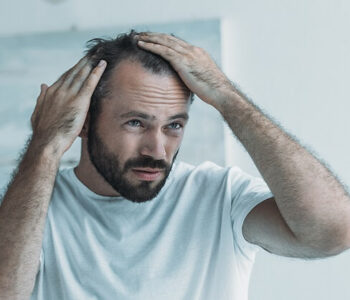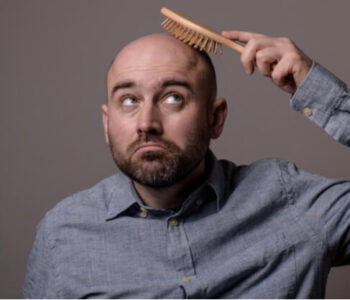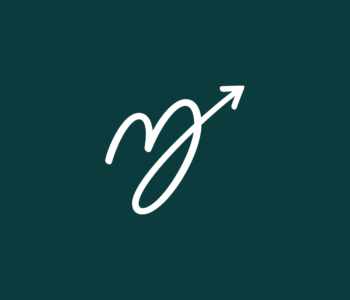In 30 seconds…
Can Minoxidil help beard growth? Maybe. While the famous hair loss medication is designed as a treatment for male pattern baldness, many people suggest it could promote facial hair growth, too. In truth, there’s a good chance it could.
The problem is that studies haven’t been able to confirm that. Facial hair follicles work similarly to those on your scalp – while topical Minoxidil use on the scalp has been found to cause unwanted facial hair growth. Yet, the only piece of research that studied Minoxidil for beard growth showed it wasn’t much better than a placebo.
There is a possible danger too. Minoxidil is not designed to be applied to the face. Doing so may increase the risk of side effects, including skin irritation, flushing, and fatigue. For now, it’s best to only use Minoxidil in the way it’s prescribed.
Minoxidil and Beard Growth: What’s the Link?
Minoxidil – often sold under the brand name Rogaine – is one of the most famous treatments for male pattern baldness out there. Effective in the vast majority of men, it’s helped millions of us around the world tackle receding hairlines and thinning crowns.
But what about beard growth? Can Minoxidil do anything to help support facial hair? Many men have sworn by it, but the truth is far more complex. Here’s what you need to know about Minoxidil beard growth.
What is Minoxidil?
Minoxidil is one of the most effective treatments for male hair loss out there. It was initially designed as a treatment for high blood pressure (hypertension). But doctors and patients started noticing that it caused unwanted hair growth. And so they started testing it on men that wanted hair growth. The rest, as they say, is history.
Now used primarily as a topical spray, Minoxidil works as a vasodilator. That means it widens (or dilates) the blood vessels in the area where it’s applied (in this case, your scalp) to encourage blood flow. Blood flow brings oxygen and nutrients that revitalise your hair follicles and encourage them to grow new hair.
How? Your hair follicles go through a cycle known as the hair growth cycle, in which they grow, rest, and shed. Minoxidil lengthens the growth phase (the anagen phase) and shortens the resting period, meaning your follicles grow for longer.
These days, it’s available over-the-counter, so you don’t need a prescription to use Minoxidil.
How Effective is Minoxidil?
Minoxidil is highly effective in the majority of men that use it to treat male pattern baldness. According to one study into the medication, 60% of men that used the Minoxidil 5% strength solution experienced increased scalp coverage.
The important thing about Minoxidil is that it’s safe, well-studied, and approved by government agencies such as the US Food and Drug Administration (FDA) and the UK Medicines and Healthcare products Regulatory Agency (MHRA) for use on male pattern baldness.
However, neither the FDA nor the MHRA has considered any other Minoxidil use. And by that, we mean Minoxidil for beard enhancement.
Research into Minoxidil and Beard Growth
Regulators haven’t yet approved minoxidil for beard growth for one simple reason: there hasn’t really been any significant research.
Only one study has investigated the possible link between Minoxidil and beard growth, published in the Journal of Dermatology in 2016. Using a sample of 48 men, the study found that beard hair count was significantly higher after 16 weeks of Minoxidil use. Yet, hair diameter – the thickness of individual hairs – was no better than the placebo. The patients’ own assessments of their beards, though, were much improved after using Minoxidil.
While not overwhelmingly a large trial, the study’s results are promising – particularly regarding patient satisfaction.
A similar study into Minoxidil’s use on eyebrows might be encouraging. One study found the Minoxidil solution to be very effective in encouraging eyebrow hair growth in those with reduced hair density.
In short, however, more research into the effects of Minoxidil on beard hair is needed. What you need to know is that using Minoxidil for beard growth is “off-label,” meaning that no one has checked its efficacy or safety profile. In other words, no one is quite sure about its possible side effects when used for beard growth.
The Minoxidil Side Effects?
The risk with applying Minoxidil directly to your face is that you may experience more significant side effects.
Users of Minoxidil solution – rather than the Minoxidil spray – once found that it would drip onto their face, forehead, and neck. In doing so, the liquid Minoxidil increased the risks of side effects compared to those who applied the medication properly. To make sure you get the desired effects, you really should ensure you apply Minoxidil in the best way – to the area that needs it most.
Side effects that can occur from Minoxidil use include:
- Skin dryness, itchiness, and contact dermatitis (particularly on sensitive skin)
- Facial flushing
- Lowered blood pressure
- Tingling hands and swelling
- Chest pain and heart palpitations
Usually, these side effects are the result of misapplication or overapplication. The use of Minoxidil on your face does increase these risks, and it may not be worth it for a full beard.
Minoxidil Beard: A Side Effect
By the way, regular Minoxidil use on the scalp can have a final common side effect. You guessed it: beard growth.
Minoxidil use for scalp hair regrowth can cause hair to grow in places that you didn’t necessarily expect: your face, your eyebrows, and across the rest of your body. Again, that’s usually the result of mis- or overapplication.

Just two spray applications per day
The most powerful spray for direct treatment to the scalp. Just two spray applications a day.
Key Takeaways
Minoxidil for beard growth? It looks like we could be onto something. However, without sufficient evidence on its efficacy and safety, we’re not going to be recommending it just yet.
If you’re going to go “off-label” to give some fuel to your fuzz, or you want to fill out your patchy beard, please be aware of the side effects. As it stands, Minoxidil is only for male pattern baldness.












